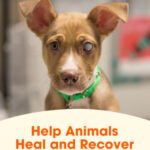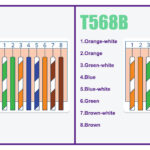Feeding your feline companion can be a complex decision, especially when considering the controversial topic of Raw Cat Food Diets. While the wild ancestors of our domesticated cats thrived on raw prey, questions arise about whether this translates to the optimal diet for modern house cats.
This guide delves into the world of raw cat food diets, exploring both the potential benefits and risks. By understanding the nuances, you can make an informed choice that best supports your cat’s health and well-being.
Understanding the Raw Cat Food Diet
At its core, a raw cat food diet mimics the natural diet of wild cats. It consists of uncooked ingredients, primarily focusing on animal-based components.
Cats are obligate carnivores, meaning their bodies are biologically designed to derive essential nutrients from animal tissue. Raw cat food diets cater to this need by prioritizing uncooked meat, fish, and organ meats. Ground bones are often incorporated to provide vital calcium and phosphorus. To ensure complete nutrition and prevent deficiencies, these diets are typically supplemented with vitamins and minerals.
A key aspect of feline nutrition is their high protein requirement. Unlike many other animals, cats utilize protein as their primary energy source rather than carbohydrates. Furthermore, they require specific amino acids like taurine, along with arachidonic acid, vitamin A, vitamin D, and various B vitamins, all of which must be present in sufficient quantities for optimal health.
Alt text: Nutritious raw cat food in a bowl, featuring visible meat and bone components.
Commercial vs. Homemade Raw Cat Food: Navigating Your Options
Choosing a raw diet for your cat opens up two main paths: commercially prepared raw food and homemade raw food. Both offer unique advantages and considerations.
Homemade Raw Cat Food: Control and Customization
Preparing raw cat food at home provides unparalleled control over the ingredients your cat consumes. However, this path demands significant research and commitment. Simply feeding raw meat is insufficient to meet a cat’s complex nutritional needs.
Cats require a precise balance of amino acids, fats, vitamins, and minerals to thrive. This balance is best achieved through a carefully formulated combination of meat, organ meats, vitamin and mineral supplements, and other ingredients in specific ratios.
The challenge of creating a nutritionally complete homemade raw diet is well-documented. Numerous studies have indicated that finding reliable, balanced recipes online or in print is exceedingly difficult. Even with a well-designed recipe from a veterinary nutritionist tailored to your cat’s specific needs, maintaining adherence in the long term can be challenging. Research has shown that many pet owners who start with homemade diets eventually deviate from the recipe, potentially leading to nutritional imbalances over time.
Commercial Raw Cat Food: Convenience and Nutritional Assurance
Commercially prepared raw cat foods offer a convenient and often nutritionally assured alternative. Reputable manufacturers adhere to guidelines established by the Association of American Feed Control Officials (AAFCO), ensuring a base level of nutritional adequacy.
When selecting a commercial raw cat food, it’s crucial to look for an AAFCO statement of nutritional adequacy on the label. This statement guarantees that the food is formulated to meet established nutritional levels. Examples of AAFCO statements include:
- “[Brand Name] Cat Food is formulated to meet the nutritional levels established by the AAFCO Cat Food Nutrient Profiles for adult maintenance.”
- “Animal feeding tests using AAFCO procedures substantiate that [Brand Name] Cat Food provides complete and balanced nutrition for all life stages.”
AAFCO-approved cat foods, whether raw or cooked, provide assurance that your cat receives the fundamental elements of feline nutrition.
Alt text: Selection of commercial raw cat food products, showcasing frozen and freeze-dried formats.
BARF Diet for Cats: What Sets It Apart?
The term BARF, standing for “Biologically Appropriate Raw Food” or “Bones and Raw Food,” is sometimes used to describe a specific type of raw cat food, often homemade or commercially available.
BARF diets emphasize the inclusion of raw bones and organ meats, going beyond simply adding raw meat to other ingredients for balance. Proponents believe this approach more closely mimics a cat’s natural prey diet. However, the fundamental pros and cons of BARF and non-BARF raw cat foods remain largely similar, primarily revolving around the benefits and risks associated with raw ingredients.
Raw Cat Food vs. Other Cat Food: Is Raw Truly Superior?
While nutritionally deficient cat foods exist across all categories, including both processed (canned, dry) and raw diets, many purported benefits of raw feeding can be achieved by simply choosing a higher-quality, more biologically appropriate cat food regardless of its raw or cooked state.
Let’s compare raw cat food to other types of cat food based on key factors:
Water Content: Hydration from Food
Cats naturally obtain a significant portion of their water intake directly from their food. Dry cat food is notoriously low in moisture, whereas canned cat food can provide comparable or even higher water content than raw cat food. If hydration is a primary concern, high-quality canned food can be a strong contender.
Ingredient Quality and Digestibility: Raw Doesn’t Equal Superior
The quality of ingredients can vary widely in both raw and cooked cat foods. Raw food is not inherently synonymous with “high quality” or “high digestibility.” In fact, cooking can enhance the nutritional value of certain ingredients.
For instance, raw seafood often contains thiaminase, an enzyme that breaks down thiamine (vitamin B1). Consuming primarily raw seafood can lead to thiamine deficiency in cats, causing appetite loss, seizures, and even death. Cooking effectively neutralizes thiaminase, making these types of seafood safe for feline consumption.
Nutritional Value: Scientific Evidence is Lacking
Currently, no scientific studies conclusively demonstrate that raw cat food diets offer superior nutrition compared to other types of cat food. While a well-formulated raw diet can certainly be nutritionally excellent, similar benefits can be achieved by opting for a high-quality canned cat food, for example. The emphasis should be on quality and nutritional balance, regardless of whether the food is raw or cooked.
Safety Concerns: Addressing the Risks of Raw Cat Food
While raw cat food can be nutritionally beneficial, it’s crucial to acknowledge and address the inherent safety risks associated with raw ingredients.
Studies have shown that commercially prepared raw pet foods have a higher prevalence of contamination with potential pathogens like Salmonella, Listeria, and E. coli compared to conventionally processed pet foods.
Homemade raw diets are not immune to these risks. USDA estimates indicate that a significant percentage of raw chicken in human food production is contaminated with Salmonella and/or Campylobacter bacteria. Furthermore, parasites like Toxoplasma gondii can be transmitted through raw meat.
While healthy adult cats may possess some resistance to foodborne pathogens, documented cases exist of cats developing serious illnesses and even fatalities from consuming contaminated raw cat food.
Humans handling raw cat food or coming into contact with contaminated cat feces are also at risk of pathogen exposure. These risks are amplified for vulnerable populations, including young children, the elderly, and immunocompromised individuals, both human and feline.
Alt text: Proper handwashing technique after handling raw meat, highlighting food safety.
Safe Handling of Raw Cat Food: Minimizing Risks
If you choose to feed your cat a raw diet, strict adherence to food safety guidelines is paramount to protect both your cat and your household. The U.S. Food and Drug Administration (FDA) provides comprehensive recommendations for safe handling of raw pet food:
- Wash Hands Thoroughly: Wash your hands with soap and water for at least 20 seconds after handling raw pet food and after touching any surfaces or objects that have come into contact with it. This includes countertops, refrigerator interiors, kitchen utensils, feeding bowls, and cutting boards.
- Clean and Disinfect Surfaces: Thoroughly clean and disinfect all surfaces and objects that have touched raw pet food. Begin by washing with hot, soapy water, followed by disinfection. An effective disinfectant can be made by mixing 1 tablespoon of bleach with 1 quart (4 cups) of water. For larger quantities, use ¼ cup of bleach per gallon (16 cups) of water. Dishwashers can also be used for cleaning and disinfecting utensils and bowls.
- Proper Thawing: Freeze raw meat and poultry until ready for use. Thaw in the refrigerator or microwave, never at room temperature on the countertop or in the sink.
- Handle Raw Meat Carefully: Avoid rinsing raw meat, poultry, fish, and seafood, as this can spread bacteria to other foods and surfaces through splashing.
- Keep Raw Food Separate: Store raw food separately from human food to prevent cross-contamination.
- Refrigerate or Discard Leftovers: Promptly refrigerate any uneaten raw food or safely discard leftovers.
- Cook Ingredients Thoroughly (If Cooking): If you use raw ingredients to prepare cooked pet food, ensure all food is cooked to the proper internal temperature using a food thermometer to eliminate harmful bacteria.
- Avoid Pet Contact with Face: Refrain from kissing your pet around its mouth and prevent your pet from licking your face, especially after it has eaten raw food.
- Wash Hands After Pet Contact: Wash your hands thoroughly after touching or being licked by your pet, especially after they have eaten. Wash your face if your pet “kisses” you.
By diligently following these guidelines, you can significantly reduce the risks associated with feeding a raw cat food diet.
WRITTEN BY:
[Expert Veterinarian Name], DVM
Veterinarian with extensive experience in feline nutrition and dietary management.


